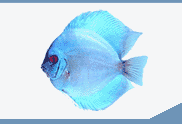

 |
||||||||||||
 |
||||||||||||
| Decapsulating Shrimp Brine Eggs | ||||||
| Craig Watson and Roy P.E. Yanong | ||||||
Introduction Brine shrimp eggs are used throughout the world as a food for small fish in hatcheries. These eggs are really cysts which, if they are kept dry, can remain dormant for years before hatching. As soon as the eggs are exposed to water, the hatching process begins. When hatching brine shrimp eggs, we not only produce baby brine shrimp, but also the empty shells out of which they came, along with unhatched eggs. These are mixed in the hatching jar. The unhatched eggs and shells from the hatched eggs, must be separated from the baby brine shrimp since they are not digestible if eaten by small fish. If a small fish eats just a few of these shells or unhatched eggs, its intestinal tract may be blocked causing death. The process of separating the shells and unhatched eggs from the baby brine shrimp is quite time consuming, and sometimes hard to do effectively. A process that is used in many hatcheries involves removing the outer layer (shell) of the eggs (decapsulating) with chlorine (household bleach), leaving the unhatched baby brine shrimp protected in a membrane. Besides making the harvest of the hatched brine shrimp easier, this process also: Essentially sterilizes the eggs which may have disease organisms on the outer layer of the egg. Can produce a higher percentage of hatching, since the brine shrimp no longer have to break through the hard outer layer of the egg. Allows you to feed even the unhatched eggs to fish, since the undigestible outer layer of the egg is no longer present. Decapsulated eggs can be hatched immediately after treating them with chlorine, or can be stored in a saturated brine solution in the refrigerator for up to two months before hatching. This allows you to decapsulate large quantities of eggs, store them, and use small portions as needed. The brine solution dehydrates the eggs, effectively stopping the hatching process. The eggs will hatch normally when placed in a hatching solution of lower salinity water. Procedure Note: The following is the procedure for decapsulating one pound of eggs. The amounts of water and household bleach (chlorine) can be changed accordingly if you are working with more or less eggs. You will need the following items:
* In 1 gallon of water, dissolve salt until no more can be dissolved and salt remains in the bottom of the container. Steps in Process
more... |
 |
|||||
| About Us :: Message Board :: Chat | |||||
| Library :: Photo Gallery :: Links & Resources :: Breeders & Sponsors :: Merchandise | |||||
| Website designed by: EthanCote.com | � 2001-2004, SimplyDiscus.com. All Rights Reserved. | ||||